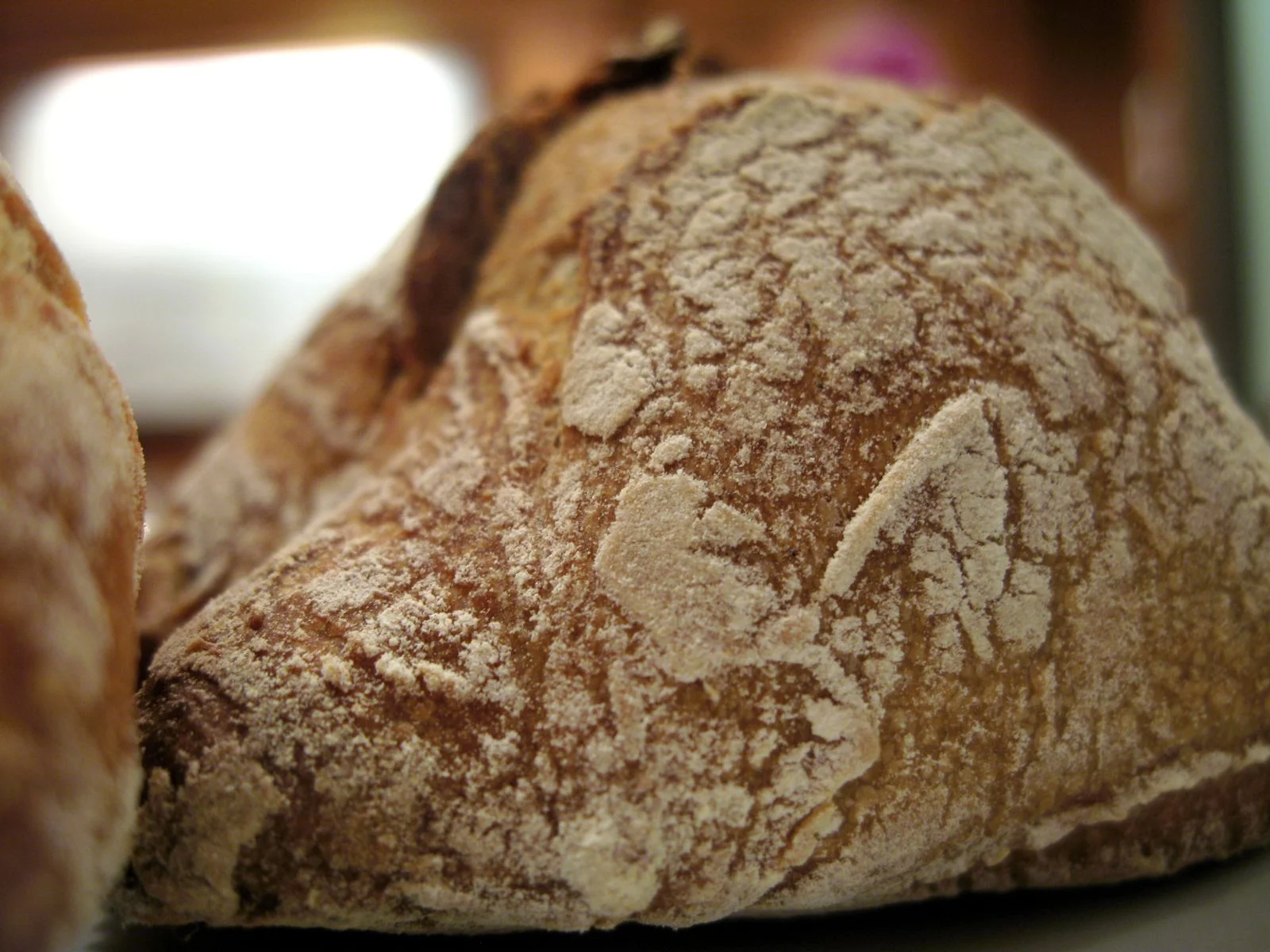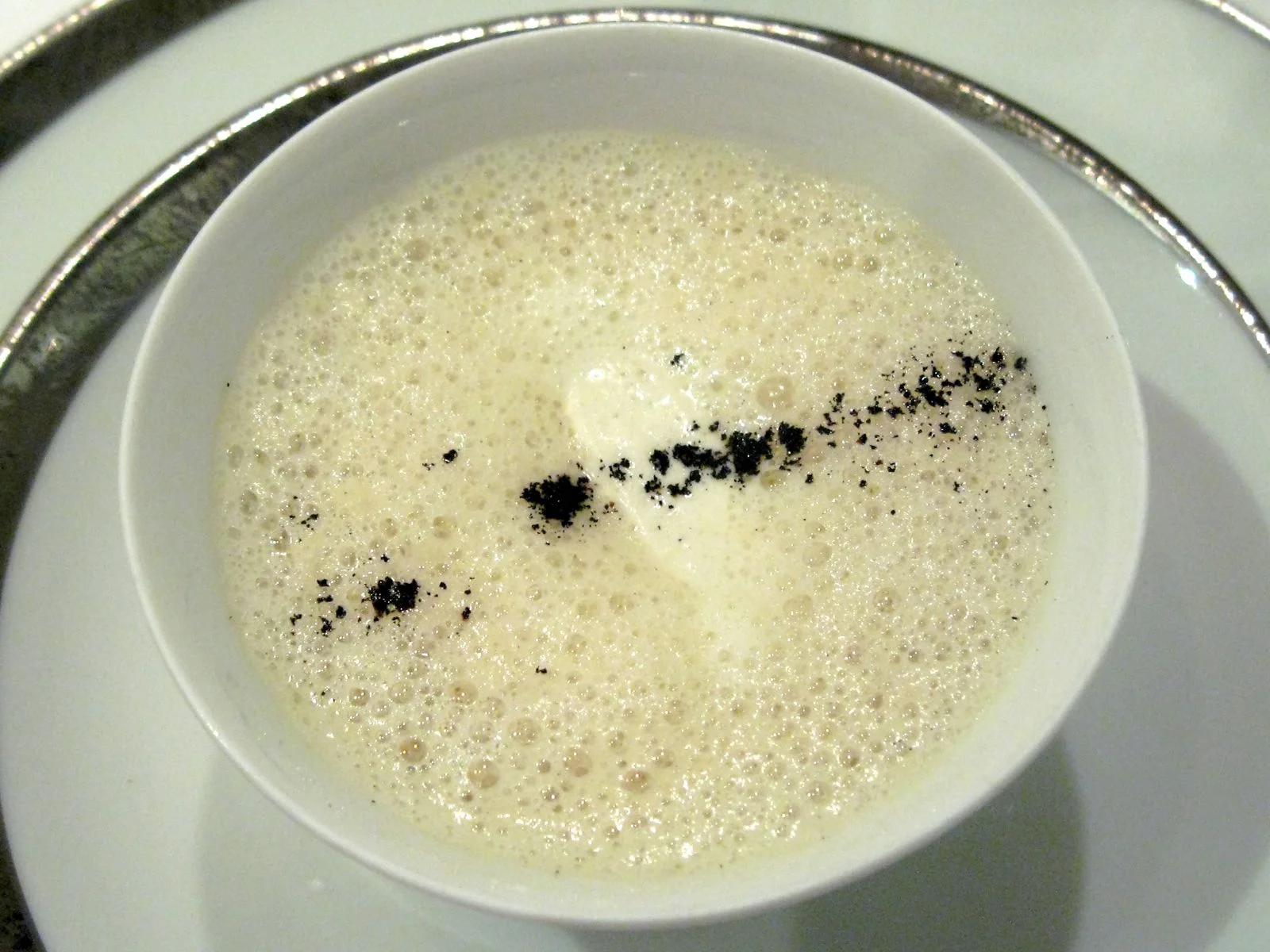Taillevent
I visited Paris for the first time when I was thirteen with my family. My father made a reservation at what was one of the most well-known restaurants in the world: Taillevent. Perhaps it is a bit strange that I still remember exactly what I ordered, and what everyone else at the table ordered, those many years ago. As usual, even back then, I wanted the tasting menu; but, I was (and still am) the only one in the family with an endless appetite and so appetizer and main course it was. Thankfully we got dessert, which was the highlight of that meal for me, for it was the first time I tried fraises des bois. I was so disappointed (and laughed at) when I asked for them at Pathmark upon returning home. I still have the menu from my first experience at Taillevent, as I was completely blown away by the technique, quality of ingredients, and deft presentation of every dish -- it was my first exposure to this type of elaborate preparation. And so it was interesting for me to return, nearly a decade later, to re-evaluate my memories. And unfortunately, things do change. The first time I ate here, I left with memories of eating in a large ornate dining room with a high ceiling and chandeliers; this time, however, the dining room was much more modest with wood paneling, comfortable sink-in couches, and faux windows with frosted glass curtains. I found the latter more comfortable. Then I realized, that there are indeed three different dining rooms. I was also thrown back into the memory of an elderly captain making conversation with each table one at a time, and never two consecutively, as that would seem insincere. He would magically make arrival woes due to traffic, the rain, or a pre-dinner shower rush -- whatever the reason for pre-arrival stress (everyone has one) -- seemingly disappear. The gentleman did this by deftly engaging a table's interests (the Argentine woman at the table next to mine was a photographer) and by relating to the diners. Once this mutual comfort was established through new found trust based on having something in common, he would proceed with the menu and an apéritif. This man was very comforting through his grandfatherly essence and made everyone feel at ease before beginning to eat, as if we were all transported back in time to a place where overeating was acceptable, an extra glass of champagne was okay, and the only thing of importance was to enjoy the evening with exceptional cuisine and the company of those who matter. This sense of comfort was amplified by the over-sized tables and chairs which encouraged sprawling out and slouching, two things that pair well with a tasting menu. This was a very comfortable meal, indeed; my only complaint was the food.
The evening started with golden gougères lightly seasoned with nutmeg which seem to have been sitting around for a minute or two longer than necessary because, on arrival, they were only lukewarm and beginning to get soggy. Nevertheless, the slight saltiness paired nicely with a glass of champagne. I did wonder what the nutmeg added to this, aside from what seemed like unnecessary differentiation of a classic introduction. The bread came next with a fairly thick crust that made two rolls more than sufficient for the evening.
The amuse bouche was a foamed mushroom and artichoke cream soup with a dollop of crème fraîche and sprinkles of charred mushroom. The essence of artichoke was fairly strong and appreciated; but, eating this dish was like dredging the Thames: it was impossible to predict what was going to come up with each spoonful. The first spoonful uncovered yellow pepper, the second red pepper, and the third mushroom. Somewhat amusing, I suppose -- but peppers? A little random, I think. The tableside dollop of crème fraîche does wonders when eaten promptly after service, as it adds temperature and textural contrast, as well as a nice milky flavor to make the already rich cream even richer.
Official service started with parfait de foie gras de canard avec une marmelade de coing, a foie gras "parfait" with quince marmalade. Perhaps in some dialects of French, parfait means having the texture of cutting through a thick cube of frozen ice cream. In other words, this parfait was dense and hard. Ironically, it was served with a small slice of toasted bread. The ratio of parfait to bread was way off, and the richness of this dish and its textural monotony became tiresome after the third bite. If I had to guess, I would say this dish had several thousand calories. Aside from the textural issues, this would have been better off in a portion of about a third or fourth of its actual size. The quince marmalade was sweet, balancing off the salty foie and the thin layer of cucumber gelée that rest on top.
The first warm course of the evening was a royale de homard breton aux châtaignes, a butter poached Brittany lobster tail with wild mushrooms and whole chestnuts. The first thing that struck me about this dish was the drying and hardening of the sauce around the interior rim. This could have been the result of an intentional thickening of the sauce, making it more cake-like than sauce-like. But regardless of its intent, it seemed to have been sitting aside a bit too long and absorbed much of the moisture from the lobster instead of complimenting it. The chestnuts were also left whole, making for a startling textural contrast with the lobster. As for flavor, the dominant flavor of the dish was that of mushroom, one that distracted from the lobster rather than complimented it. The lobster was also slightly overcooked, which when combined with the caked sauce, only increased the dryness. Aside from the technical gripes, the dish seemed relatively uninspired and plain.
The next course was the highlight savory of the evening, coquilles saint-jacques, dorées avec cresson de fontaine, two lightly seared scallops served over turnip purée in a vegetable consumé with strips of watercress. Scallops have so much potential when they're slightly north of cooked, and this potential was fully realized as these scallops were delicious, the slightly salty oceanic taste of the shellfish melding with the sweet earthy turnip purée. The vegetable consumé also contributed to the earthy flavor and mixed particularly nicely with the turnip purée and watercress. While this was the highlight dish of the night, the dominant flavor of this dish was the scallop, leading me to question exactly how much the accompaniments accentuated that flavor. While it is important for chefs to step back and let nature speak for itself, that doesn't mean that the entire flavor spectrum of a chef's dish should be attributed to the ingredient's natural essence, particularly when the chef didn't step back. In other words, I would have probably enjoyed this dish just as much if it were a plate simply of two seared scallops -- the accoutrements seemed superfluous.
The final savory course for the night was selle d'agneau rôti au piment d'Espelette avec côte et feuilles de blette à la sarriette, two medallions of roasted lamb served with lightly salted swiss chard. The meat had a beautiful pink color, the result of my response to "how do you like your meat," a question I've rarely been asked in Michelin starred authoritarian French restaurants. But this question was much appreciated, as a good chef is one who is willing to make minor tweaks to meet personal diner preferences -- I'm not saying ketchup should be put on the table; but, if my sister, for example, is squeamish about blood, perhaps medium is a fair balance. So in that sense, the veal was tailored to my tastes. Unfortunately, nearly everything else on the plate was uninspired and, frankly, boring. Roasted potatoes? Stewed vegetables? Perhaps those would be nice sides at many other places; but for a restaurant with a reputation such as Taillevent, I had much higher expectations.
Things got really interesting with the next course, which I enjoyed very much, Roquefort glacé avec pruneau au Banyule. When I saw this on the menu, I immediately became curious to see how the Roquefort blue cheese ice cream would turn out, particularly because most other renditions of cheese-based ice creams were of fromage blanc, a neutral-flavored cheese that can easily be turned sweet or savory. The texture was of cream cheese; but somehow much less dense and more airy. The flavor was indisputably salty, as if by some hand of magic the texture of blue cheese had been converted into a light gelato. This was delicious, particularly when mixed with the sweetness of the prune and red wine. This dish was an interesting play on textures, and was particularly well-balanced: the prune would have been cloying on its own, and the cheese would have gotten boring on its own; but together, they were wonderful.
The first official dessert was a chocolate craquant with chestnuts, a light chocolate cake enveloped in a lace of dark chocolate and crowned with a whole chestnut and gold leafing. The cake was moist and somewhat wet, and it was this texture combined with the lightness of the chocolate flavor that made sometimes forget this was indeed a chocolate cake. It was also texturally uninteresting given the significant portion. My palate began to fatigue after the third or fourth bite. Also, the flavor of chestnut was unnoticeable. Yes, I saw the whole nut on top; but that only created a textural dissonance. I would have liked a stronger chocolate flavor, something crispy, and perhaps some salt, as salt and chocolate are a beautiful combination.
Next was a fantaisie aux fruits exotiques, a round cake using cubes of fruit and caramel as bricks and mortar, topped with an almond pastry and mango sorbet. Definitely a lighter dessert, appreciably following the somewhat heavier (although still light) chocolate craquant. The sweetness of the mango sorbet dominated this dish making it impossible to differentiate between the different fruits. There was also no contrast, letting the sweetness of the fruits, sorbet, and sugared pastry run off without bounds. The cold temperature of the sorbet also didn't help to bring out the natural flavors of the fruit. While this was tasty, I would have enjoyed it more as an intermezzo.
The petits fours were last, a small plate of 5: a lemon macaron, an earl-grey scented chocolate, an almond tuile, a miniature chocolate fondant topped with chocolate mouse, and a blackberry tart. None of these were particularly memorable; though the scent of the Earl Grey chocolate was fairly interesting. After finishing this small plate, admittedly, I hoped that more food would be coming. I was also brought both of the desserts and the petits fours at once, making me question if I was approaching a second seating time, since this was an earlier dinner. Not quite being full, to the waiter's disbelief, I ordered two more plates of petits fours.
It was indeed interesting to see how this restaurant has changed over the past ten years, and how my memory of this restaurant compared with my more current experiences. Either the restaurant has changed for the worse, or my palate has become more sophisticated. Likely, it's a combination of the two; but, this time around, my experience was lackluster. I will say that I felt incredibly comfortable throughout the entire meal, and thought that this might be a nice place to have lunch or an early dinner on someone else's tab due to the comfortable seating, dining rooms, and personal service. But since there are so many other fantastic restaurants in this city, it would be tough to repeat this one.



















